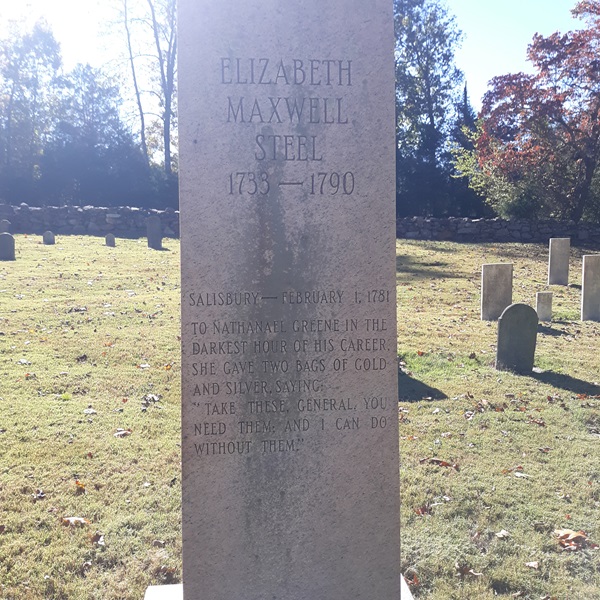Mrs Elizabeth MAXWELL/GILLESPIE/STEELE
SAR Patriot #:
P-296787
The following information was assembled from numerous sources and cannot be used directly as proof of Qualifying Service or Lineage.
It is considered a research aid and is intended to assist in locating sources that can be used as proof.
State of Service: NC
Qualifying Service: Patriotic Service
DAR #: A108174
Birth: 1733
Death: 22 Nov 1790 Salisbury / Rowan / NC
Qualifying Service Description:
Gave financial aid
Additional References:
- Wheeler, John H, Historical Sketches of North Carolina, from 1584-1851, PA. Philadephia: Lippincott, Grambo and Co, 1851, pg 381-383
- Ellet, Elizabeth F, The Women of the American Revolution, Volume I, New York City: Baker and Scribner, 1848, pg 297-300
Spouse: (1) Robert Gillespie; (2) William Steele
Children: John; Margaret;
Members Who Share This Ancestor
| Date Approved | Society | ACN | SAR Member Info | Lineage via Child | View Application Detail | |
|---|---|---|---|---|---|---|
| 2022-07-15 | AR | 102672 | Harold Anthony Ritch (223120) | John |
Location:
Mill Bridge / Rowan / NC / USA
Find A Grave Cemetery #:
Marker Type:
DAR
SAR Grave Dedication Date:
Comments:
- Image taken and provided with permission from compatriot Gerald Adams (SC) member 195444
- Modern upright monument erected by the DAR
Directions to Cemetery / Gravesite:
- The cemetery driveway divides the cemetery into two large sections. Proceed to the northern most point along the driveway. From the driveway loop go north about 2/3 of the length of this cemetery section
- In about the middle of the cemetery (left to right) is the obelisk type marker for Elizabeth Steele
- It is a modern marker erected by the DAR
Additional Information:
A few mentions of Mrs. Steele in this article on the Thyatira Church and its history here: Thyatira Church | American Revolution Tour of N.C. (amrevnc.com)


